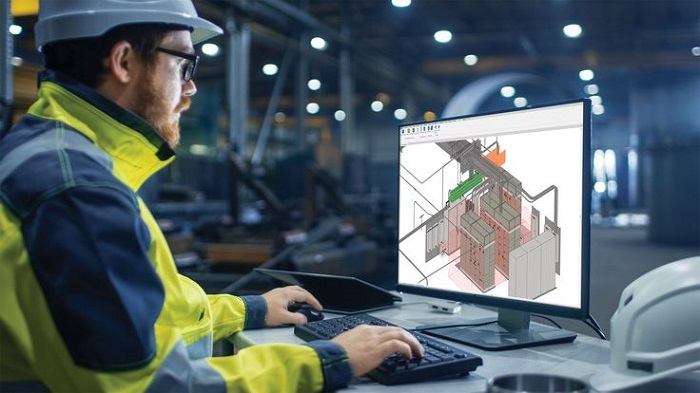As the demands on facilities management (FM) evolve, so too do the technologies that help professionals manage buildings efficiently. One of the most transformative technologies to emerge in recent years is Building Information Modelling (BIM). Originally developed for the design and construction phases, BIM has now found its place in the ongoing management and operation of buildings. Facility managers are discovering that by leveraging BIM, they can take a proactive approach to maintenance, sustainability, and space utilisation.
The Shift to Proactive Management
Traditionally, facilities management has been a reactive process. Repairs were carried out after something went wrong, and the efficiency of operations was often a matter of guesswork. However, the introduction of BIM into FM changes the dynamic entirely. Facility managers no longer have to wait for an issue to arise. Instead, BIM enables them to anticipate problems before they occur.
By providing a detailed digital model of a building’s infrastructure, BIM allows managers to monitor systems in real-time, predict when maintenance will be needed, and plan accordingly. This proactive approach not only reduces downtime but also cuts costs by preventing small issues from turning into major repairs.
For example, sensors embedded in heating, ventilation, and air conditioning (HVAC) systems can feed data into the BIM model, alerting managers to potential failures before they disrupt operations. This real-time data integration means that maintenance can be scheduled when it’s least disruptive, avoiding unnecessary system breakdowns or inefficient energy usage.
Enhancing Space Utilisation
Another significant advantage of BIM in facilities management is its impact on space utilisation. With more businesses adopting flexible working arrangements, managing office space efficiently has become a top priority. BIM provides detailed insights into how space is used and where there is potential for improvement.
Through the analysis of space occupancy data, facilities managers can make informed decisions about space allocation, enabling more effective planning for future needs. Whether it’s redesigning workspaces for increased collaboration or repurposing underutilised areas, BIM offers a comprehensive view of the building’s spatial layout and how it’s being used.
For instance, during periods of low occupancy, like after-hours or during holidays, facility managers can adjust heating, lighting, and ventilation based on real-time occupancy data. By reducing energy consumption in unused areas, this approach leads to significant savings and a reduced carbon footprint.
BIM and Sustainability: A Perfect Match
Sustainability is now at the forefront of building management, and BIM plays a pivotal role in achieving green building goals. BIM allows facility managers to incorporate sustainability into every stage of a building’s lifecycle, from design to operation. By integrating energy performance data, materials tracking, and environmental analysis, managers can identify areas where efficiency can be improved.
For example, BIM enables better tracking of water and energy usage, helping managers identify waste and optimise resources. Facility managers can also simulate different scenarios to understand the environmental impact of various materials or systems, ensuring that sustainability is not only a goal but a continuous process throughout the building’s operation.
BIM can also be used to facilitate compliance with environmental regulations and certifications, such as LEED (Leadership in Energy and Environmental Design). The detailed digital representation of a building, combined with performance data, ensures that managers are equipped with the tools they need to meet sustainability benchmarks and enhance the building’s overall environmental performance.
Improving Lifecycle Asset Management
Facilities are complex ecosystems, with various systems—plumbing, electrical, HVAC, and structural elements—all working in tandem. Managing the lifecycle of these assets, from installation through maintenance and eventual replacement, can be daunting without a centralised system. BIM changes this by creating a detailed record of every component within a facility.
With BIM, every system and asset is linked to a wealth of information, including installation date, maintenance history, warranty details, and expected lifespan. Facility managers can access this data instantly, ensuring that every part of the building is maintained according to its specific needs. When it’s time to replace or upgrade a system, BIM provides the information necessary to make informed decisions, reducing guesswork and ensuring continuity in operations.
In large or complex facilities, such as hospitals or universities, this level of detail is invaluable. Managers can ensure that assets are replaced in a timely manner, reducing the risk of costly, unexpected breakdowns. Additionally, having a comprehensive digital record allows managers to compare the performance of various assets, making it easier to select the most cost-effective and reliable solutions for future projects.
Collaboration and Communication: The Key to Successful BIM Implementation
While BIM offers immense benefits, its full potential is realised when there is collaboration between all stakeholders involved in the lifecycle of a building. From architects and engineers to facility managers and contractors, everyone must be on the same page for BIM to be successful.
In the context of facilities management, this means that FM teams should be involved early in the design and construction phases of a project. By integrating FM knowledge during the planning stages, the building can be designed with its future operations in mind, reducing the need for costly adjustments later on. Once the building is operational, BIM serves as a shared platform where all stakeholders can access real-time data and make informed decisions.
Communication is also improved with BIM’s cloud-based capabilities. Whether it’s accessing digital plans or updating maintenance records, information can be shared across teams instantly, no matter where they are located. This ensures that everyone involved in the building’s lifecycle has access to up-to-date, accurate information, facilitating smoother operations and reducing the risk of errors or miscommunication.
A Future of Smarter, More Efficient Buildings
The integration of BIM into facilities management is not just a trend; it represents a fundamental shift in how buildings are managed and operated. By providing a centralised platform for data, BIM enables facility managers to make smarter, more informed decisions that improve efficiency, sustainability, and overall performance.
As the technology continues to evolve, the potential applications of BIM in FM will only grow. Whether it’s through the integration of artificial intelligence, machine learning, or predictive analytics, the future of facilities management is undoubtedly tied to the continued development and adoption of BIM technology.
For now, facility managers who embrace BIM are setting the stage for smarter, more efficient buildings—ones that are capable of adapting to the changing needs of their occupants and the environment. And as the world moves towards a more sustainable future, BIM will play a key role in ensuring that the buildings of tomorrow are as efficient as they are innovative.
This year, SEFM has quietly been gaining a reputation across The South of England for their fresh approach to facilities management. Their focus on creating strong partnerships with clients, paired with a commitment to sustainability and advanced technology, is redefining how FM services can be delivered.









 Bitcoin
Bitcoin  Ethereum
Ethereum  Tether
Tether  Solana
Solana
Leave a Reply